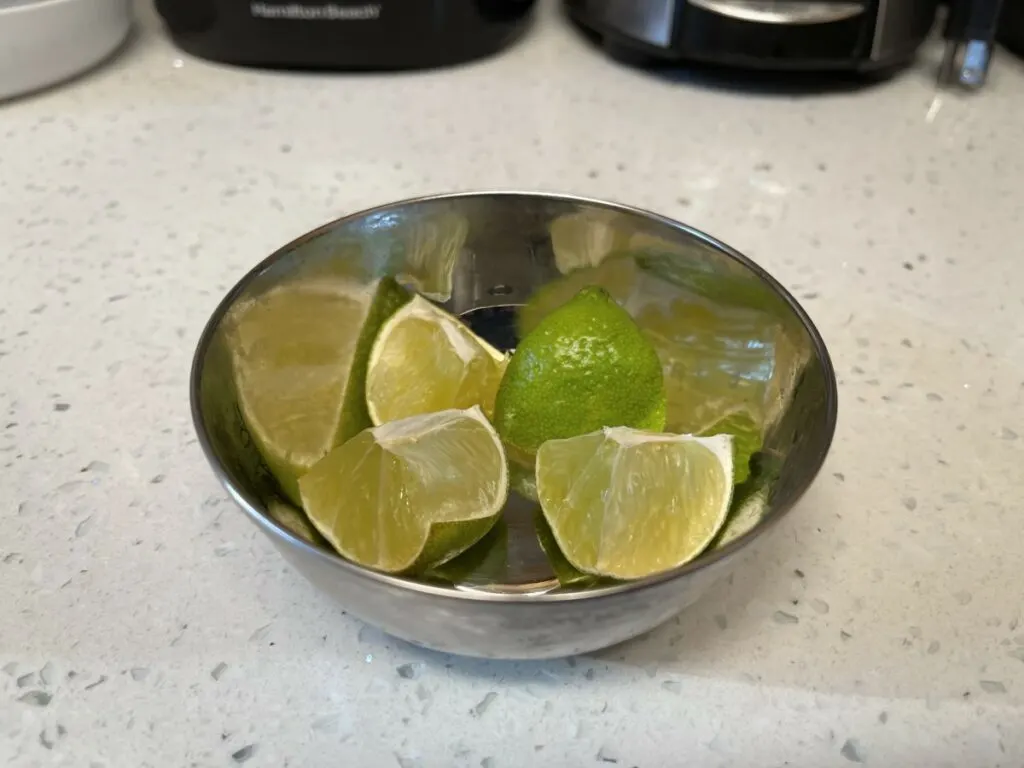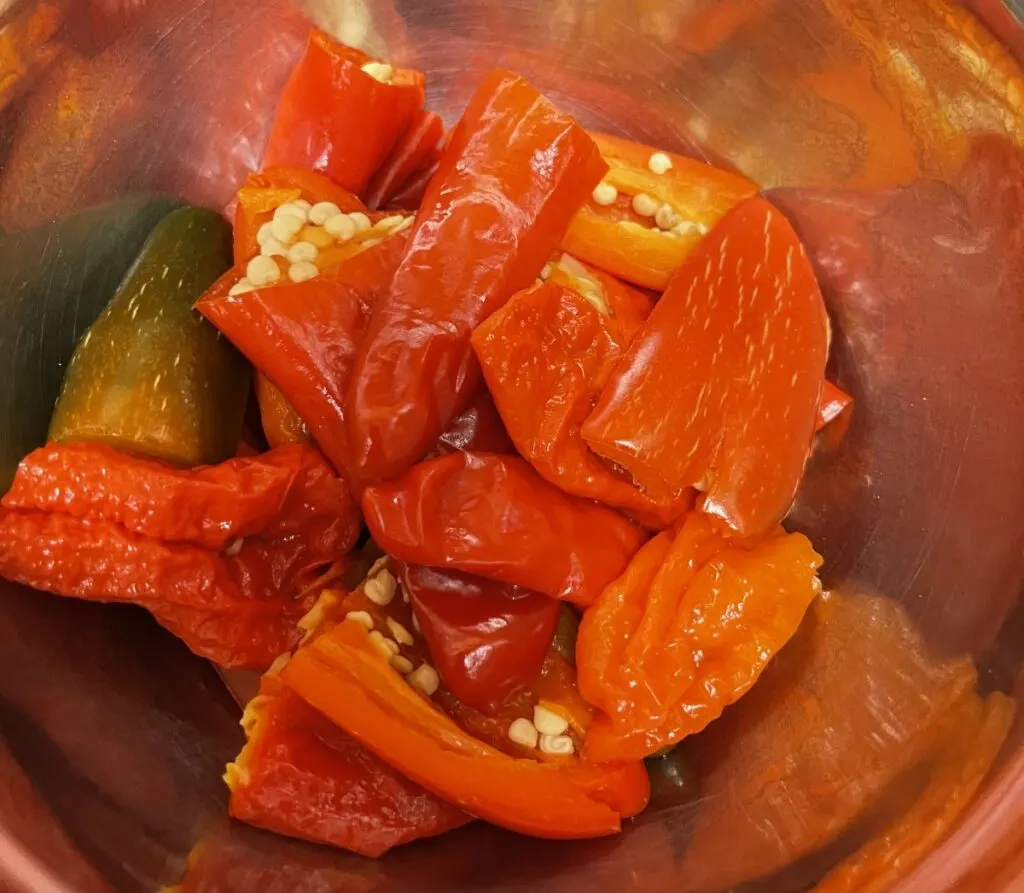As an Amazon Associate, I earn from qualifying purchases.
One common item you’ll notice in your hot sauce ingredients list is vinegar. And while vinegar does add some tang and can help preserve your hot sauce for longer, is it really needed?
The answer is no, you don’t need vinegar in your hot sauce recipes. Vinegar is an excellent preservative, but other ingredients can easily fulfill that role.
Five ways of making hot sauce without vinegar include: substituting it with lemon juice, lime juice, extra water, or alcohol. You can also ferment the sauce for a unique, rich flavor. Fermentation will help preserve the hot sauce, instead of vinegar.
In this article, we’ll explore five ways to make homemade hot sauce without vinegar. If you don’t like the taste of vinegar or want to experiment with different flavors, this list will help you find a great replacement.

1. Add Lemon Juice
Lemon juice makes an excellent substitute for vinegar when making hot sauce because it has additional health benefits and tastes completely different, which is ideal for those who hate the taste of vinegar in their food.
Lemon juice is a natural preservative and also adds vitamins and other nutrients to your hot sauce. The key nutrients in lemon juice include:
- Calcium (helps promote healthy bones, heart health, and blood pressure)
- Potassium (great for muscles, skin, and heart health)
- Vitamin C (a powerful antioxidant)
Lemons (including the peel) may also help prevent cancer. It is great for gut health and might help you digest your food more effectively.
The health benefits can increase if you also use the pulp of the lemon, which you can easily incorporate into your hot sauce. However, this will make it slightly more bitter and change the texture.
Both lemon juice and vinegar are almost equally acidic (depending on the type of vinegar), with a pH level of 2-3.

2. Use Lime Juice
Lime juice is also a natural preservative, like lemon juice and vinegar. It works the same as lemon juice as a vinegar substitute but has a slightly different taste.
Unfortunately, you’ll have to buy many limes to collect enough lime juice and they also don’t produce as much juice as lemons, making it a longer and potentially frustrating process. They are also more bitter, so keep that in mind.
Besides the slightly bitter taste and the smaller size, there aren’t too many differences between limes and lemons. Both fruits have the same health benefits because they contain similar nutrients and vitamins.
If you don’t feel like juicing countless limes, you could use bottled lime juice, which is widely available at most grocery stores.
3. Add Extra Water
Although adding extra water to your homemade hot sauce will not add the same preservative properties or flavor effect as vinegar, but it’s a great way to give your hot sauce the same consistency as if you had used vinegar.
Keep in mind that water will make your hot sauce milder because other flavors will be diluted and not taste as strong. Your hot sauce will also lack any tangy flavor, unless you add some lemon or lime juice.
You can add more peppers and/or seasoning to compensate for the milder taste if you want your homemade sauce to pack a similar punch.
4. Replace With Alcohol
While you won’t be able to substitute alcohol for vinegar on a one-to-one ratio, the preservative properties of alcohol could be a good alternative to vinegar.
Like water, alcohol will likely make your hot sauce milder. So you may want to consider adding more peppers or other seasonings to enhance the spiciness of the sauce.
Here are a few ideas for substituting vinegar with alcohol in your homemade hot sauce:
Hot Sauce With Beer
Beer has a particular and yeasty taste, so don’t add it to your hot sauce if you aren’t a huge fan.
The alcohol percentage of beer often ranges from 3.5% to 12%.
Jackie from The Beeroness made a fantastic hot sauce recipe with Amber Ale Beer. You can replace the Amber Ale with any other dark beer if you can’t get your hands on a bottle. A small amount of vinegar is used, but you can replace it with lemon juice, lime juice, or water.
Hot Sauce With Wine
Adding wine to your homemade hot sauce can add a whole range of flavors, giving it a sweeter and warmer taste without being too overpowering. Wine usually has an alcohol percentage of 5.5%-20%.
Hot Sauce With Whiskey
This might be the most exciting flavor on this list. Whiskey, which can have a complex and smokey taste, can completely change your hot sauce for the better. It often has a high alcohol percentage of about 35%-40%, so it can be overpowering if you add too much to your recipe.
This DIY Whiskey Hot Sauce is one to check out. The author uses vinegar in their recipe, but you can easily swap that with one of the other suggestions in this article. However, consider replacing it with something other than alcohol, as that might be a little bit too much!

5. Ferment Your Hot Sauce
Consuming fermented foods offers excellent health benefits because it adds probiotics to your diet, which help improve gut health and strengthen your immune system. Fermenting your hot sauce will also help to extend its shelf life.
Instead of the quality of the sauce declining after several days, the healthy bacteria in the sauce will make it taste better as time goes by. If you’ve ever tried kimchi, you’re probably familiar with the taste and the process. If you want an in-depth guide to fermenting peppers that can be used for hot sauce, check out our post on the subject. Below is a summarized version:
Here’s a step-by-step guide on how to ferment hot sauce:
Step 1. Buy Fresh Ingredients
The vegetables you use in the fermented hot sauce must be fresh to ensure that it is nutritious and the bacteria can thrive. Fresh ingredients will also add to the taste of the sauce, as fresh veggies have more flavor. You can use the ones you usually add to your hot sauce.
It’s also vital to wash your produce thoroughly before using it in your food because it can be contaminated and make you very ill.
Step 2. Make a Saltwater Solution
After choosing the vegetables for your hot sauce, follow these steps:
- Chop the vegetables finely and place them in a big jar with an airtight lid.
- Make a salt brine with a ratio of 7-8 grams of salt (1 ¼ teaspoon) per cup of (lukewarm) water. Make enough to cover the vegetables in the jar completely. The vegetables should be completely submerged in the brine.
- If your veggies float up to the brine’s surface, try to weigh them down with something. You can do this with whatever fits into the jar, which would still allow the lid to close. However, make sure that whatever you use is very clean. If it’s something you can sterilize, do it.
You can buy a 4-pack of the Wide Mouth Mason Jars on Amazon.com, which are perfect for fermentation. The jars are microwave- and dishwasher-safe and have an airtight lid. They have a capacity of 32 ounces (946 ml), but smaller sizes are also available.
If you need fermentation weights, these Fermentation Glass Weights from Amazon.com are non-porous and have product dimensions of 5 x 3 x 2 inches (12.7 x 7.62 x 5.08 cm), making them perfect for bigger, wide-mouth jars.
Step 3. Leave the Lid Slightly Open
Once you’ve submerged your vegetables in the saltwater, ensure that you don’t fully close the lid on the jar.
One of the signs of the fermentation process is bubbles in the brine. The bubbles are fermentation gas, and that gas needs a way to escape from the jar. That’s why you need to leave it slightly open. Another sign is a sour smell, a telltale sign that the fermentation is successful.
Step 4. Store at Room Temperature
Store the jar at room temperature in a dry and dark place for up to a week. Don’t panic if the brine turns cloudy because that’s exactly what needs to happen in a fruitful fermentation process, and it shows you when it’s finished.
Step 5. Separate the Brine and Vegetables
You’re now ready for blending, so you should separate the vegetables from the salt solution. However, you should keep some brine to dilute the blended vegetables and mix it in until you have the consistency you want for the hot sauce.
Step 6. Let The Hot Sauce Ferment in the Refrigerator
After blending and mixing the hot sauce, you can finally store it in your refrigerator with a closed airtight lid and start using it to make your food taste more exciting. As mentioned before, that’s where the hot sauce will continue to ferment, and its taste will continue to develop.
